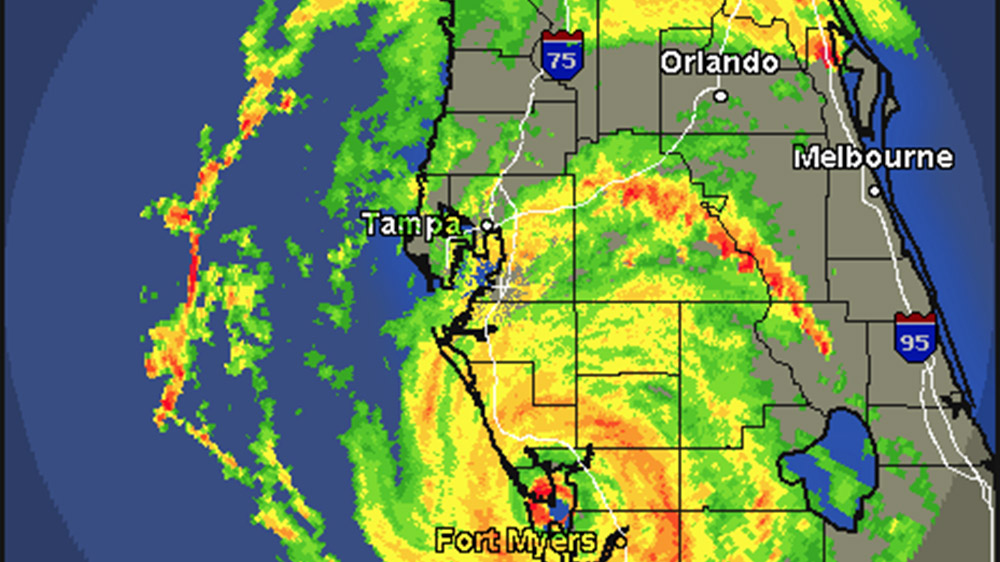Late summer in Florida brings warm ocean waters and frequent afternoon storms. Surrounded by conditions known for producing wild weather, most of the area’s experienced boat owners are ready to put their hurricane preparation plan into action at a moment’s notice. Whether you’ve recently become a boat owner, or if it’s simply been a while since you were on hurricane standby, check out these tips for prepping your boat to ride out a hurricane.
Land Storage
 Storing your boat ashore on higher ground is the most recommended method during a hurricane. The most ideal way to secure your boat is to tie it down by attaching straps with minimal to no stretch to eyes set in concrete or helical anchors. If your boat is staying on its trailer during the storm, be sure to let a little bit of air out of the tires to make it more grounded. However, never park your boat under large trees. Tree branches are some of the first things to go flying during a storm and, if the winds are strong enough, the tree itself could come crashing down on your boat.
Storing your boat ashore on higher ground is the most recommended method during a hurricane. The most ideal way to secure your boat is to tie it down by attaching straps with minimal to no stretch to eyes set in concrete or helical anchors. If your boat is staying on its trailer during the storm, be sure to let a little bit of air out of the tires to make it more grounded. However, never park your boat under large trees. Tree branches are some of the first things to go flying during a storm and, if the winds are strong enough, the tree itself could come crashing down on your boat.
If you have the option to store your boat at a dry storage rack, be sure the rack was built after 1992. After Hurricane Andrew ripped apart just about everything in its path that year, advanced building techniques were developed that withstand hurricane force winds, making structures built post-Andrew stronger.
Water Storage
If you have to store your boat on the water during a hurricane, there are several things to keep in mind. Seek out tall pilings, as shorter pilings aren’t very forgiving during a storm surge. Try to store your boat on a floating dock, which allows the boats to rise and fall with the water level without stretching or stressing lines. And while beams get wider on new boats each year, boat slips remain the same size, so try to find a marina with larger slips whenever possible.
Always assume that at least one cleat or piling will give out. Each of your lines should include a mate running in the same direction, but attached to a different spot on both the boat and the dock. For more detailed instructions and diagrams, check out these mooring tips. If you’re not confident in your own mooring skills, seek out help or other storage options before a storm is even on the radar. Boats that aren’t properly secured can become damaged, but they can also damage other structures or cause fuel and oil pollution.
Never keep your boat on a lift during a hurricane. A storm surge could wipe out the entire dock and take your boat with it. The surge could force your boat up through the roof of the lift, or even fill it with water and cause the lift to completely give out from the weight.
Better Safe Than Sorry
Regardless of where or how your boat is stored, remember to remove anything from your boat that could be easily picked up in the wind like all sails, bimini tops, coolers, chairs and cushions. This applies to both hurricanes and tropical storms.
Also, get in touch with your insurance agent and double check your hurricane coverage before the storm hits. Some insurers will actually reduce your hurricane deductible if you took proper precautions.
The key to weathering the storm is to create your plan long before one is approaching, which will help eliminate stress while you’re taking other safety measures for your home and family. When the time comes, put your plan into action at the first warning of a hurricane, as proper boat storage units will fill up and your local boat ramp will be packed pretty quickly.
Taking the time to stormproof your boat isn’t as fun as spending a few extra days on the water, but putting the effort in upfront can prevent those days from coming to a sharp halt.

